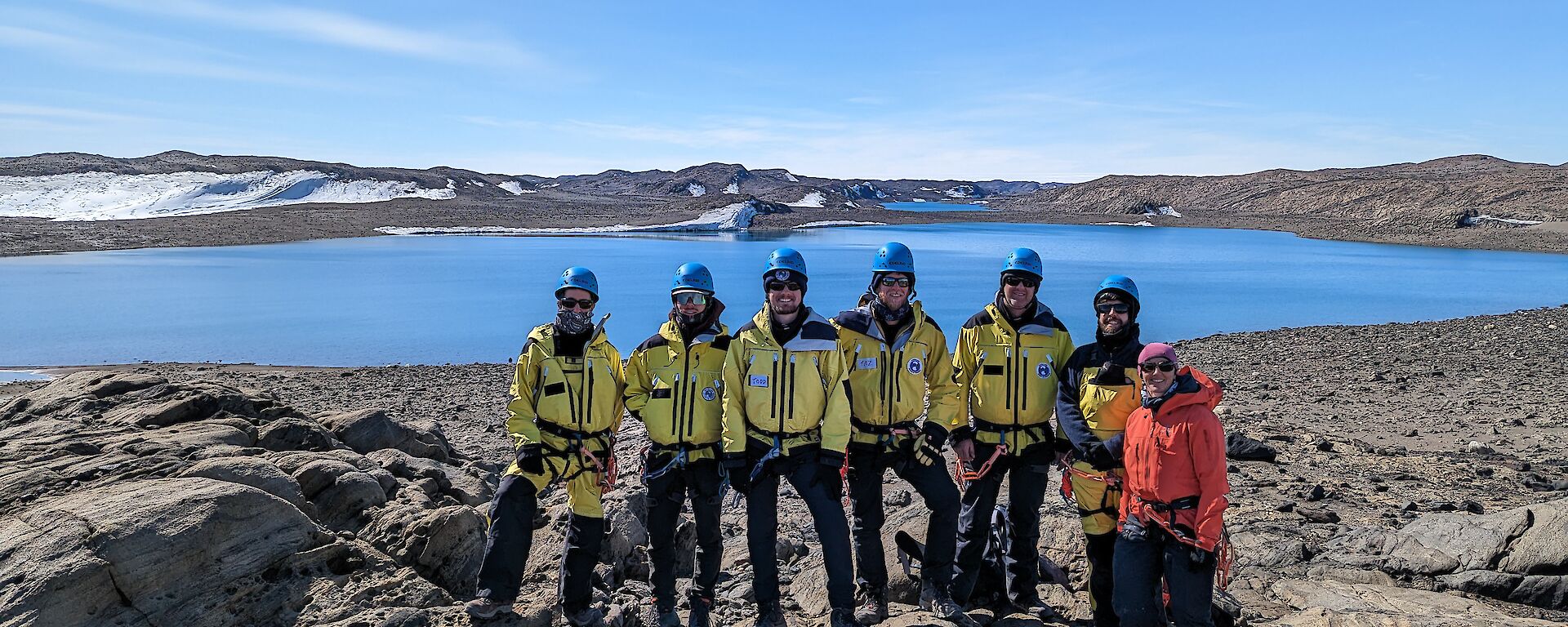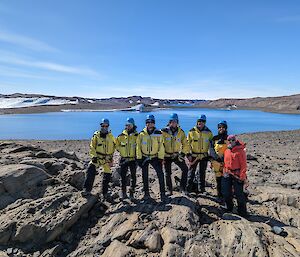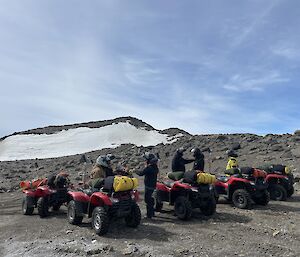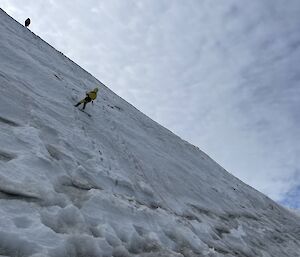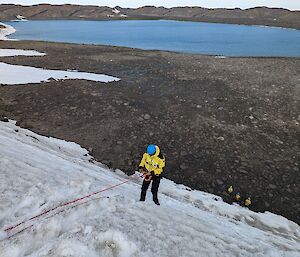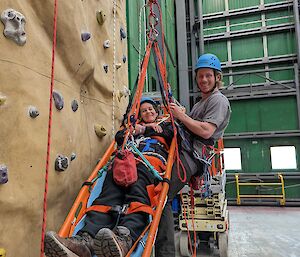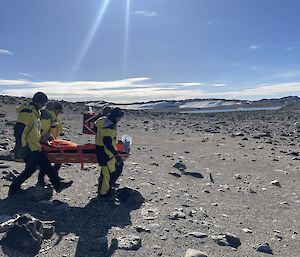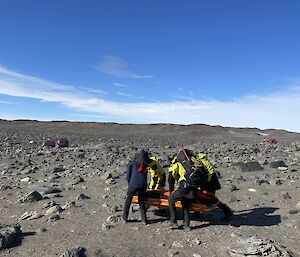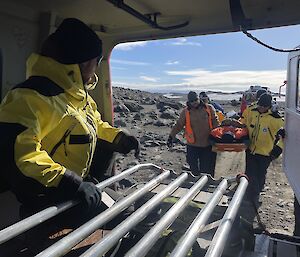One of the first things every new station team does on arrival at station is to set up their emergency response capability. Whenever there is a major incident on station or in the field, the station Incident Management Team (IMT) comes together to co-ordinate an appropriate response. If the incident happens to be in the field, the IMT will call on the services of the SAR team.
Consisting of six members and led by the Senior Field Training Officer, this team is specifically trained in search and rescue. Once directed to mobilise by the IMT, and after receiving a full briefing on the incident, SAR team members grab their specialised rescue packs and head out to the incident site. The team remains in constant radio contact with the Senior Communications Technical Officer who sits on the IMT. The station doctor is also a member of the IMT and if the incident involves injuries, provides medical advice to the SAR team as well as seeking information on the patient’s condition.
Fortunately, our protocols for field travel mean that everyone who goes off station usually has with them a radio and spare battery, GPS, personal locator beacon, spot tracker, maps, a compass and whistle, and a first aid kit. Most expeditioners also have on their mobile devices a mapping app that will give actual co-ordinates – very handy in an emergency situation. For travel within most of the Station Operating Area, expeditioners are required to carry their survival packs. These packs contain items such as a down sleeping bag, bivvy bag, a litre of water, and a full set of survival clothing including thermals, mittens, beanies and goggles, micro-spikes, polar fleece wear and windproof outers. All of this means that in an emergency, the lost or injured expeditioner can stay warm and hydrated and can remain in radio contact with station while they await rescue.
Depending on the nature of the incident, the SAR team will use a range of techniques to safely rescue the lost or injured person/s. Knowing what to do is critical in survival situations so the SAR team undergoes a lot of training to make sure their skills are current and well developed.
All members have completed training in personal skills, survival techniques, quad bike training, navigation, snow and ice anchors, ascending and descending ropes, rock anchors and slope lowers, and a day in the Greenstore using the climbing wall to build skills in using pully systems to aid in vertical stretcher rescue. The last exercise also involved our very brave doctor as the patient!
Since starting on station the SAR team have participated in two simulated incidents co-ordinated by the IMT – these exercises are invaluable as they bring together all of their training.
The training never stops as currency is very important should there ever be an incident. In the months ahead, the SAR team can look forward to perfecting their rope skills, a missing persons table-top session, learning different search techniques, and training in movement in snow and steep terrain. There will be a big practical exercise that brings all of this together and once the sea-ice freezes over again, the team will head out the back of the Vestfold Hills for a vertical stretcher rescue session exercise involving different anchoring techniques.
All wintering expeditioners received three days of field first-aid training in the pre-departure period and this included conducting primary and secondary surveys of an injured person with a strong focus on preventing hypothermia. The SAR team will continue to build on this with the station doctor providing ongoing training in various aspects of field first aid.
Karen
SL

